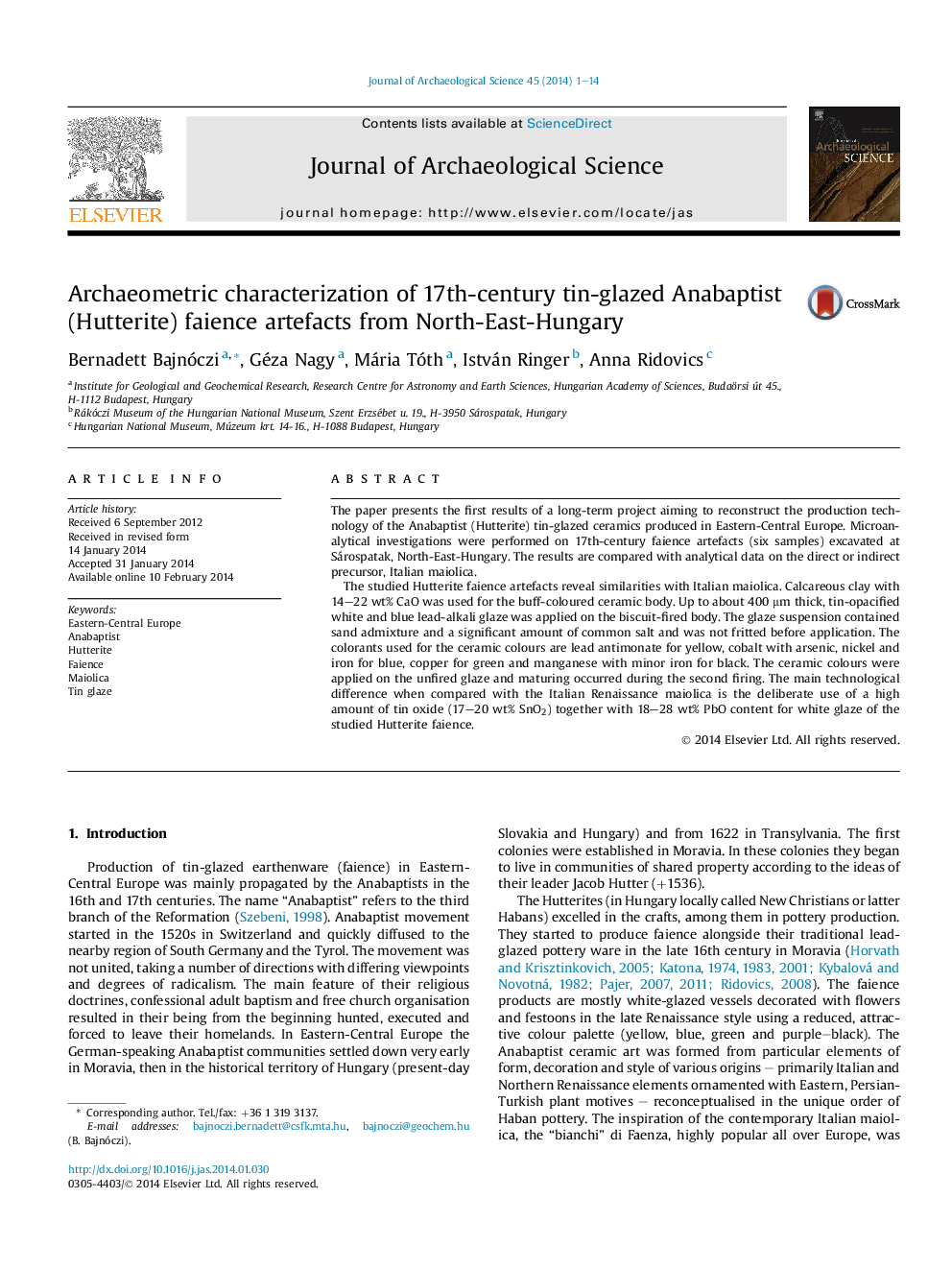| Article ID | Journal | Published Year | Pages | File Type |
|---|---|---|---|---|
| 7443333 | Journal of Archaeological Science | 2014 | 14 Pages |
Abstract
The studied Hutterite faience artefacts reveal similarities with Italian maiolica. Calcareous clay with 14-22 wt% CaO was used for the buff-coloured ceramic body. Up to about 400 μm thick, tin-opacified white and blue lead-alkali glaze was applied on the biscuit-fired body. The glaze suspension contained sand admixture and a significant amount of common salt and was not fritted before application. The colorants used for the ceramic colours are lead antimonate for yellow, cobalt with arsenic, nickel and iron for blue, copper for green and manganese with minor iron for black. The ceramic colours were applied on the unfired glaze and maturing occurred during the second firing. The main technological difference when compared with the Italian Renaissance maiolica is the deliberate use of a high amount of tin oxide (17-20 wt% SnO2) together with 18-28 wt% PbO content for white glaze of the studied Hutterite faience.
Related Topics
Physical Sciences and Engineering
Materials Science
Materials Science (General)
Authors
Bernadett Bajnóczi, Géza Nagy, Mária Tóth, István Ringer, Anna Ridovics,
